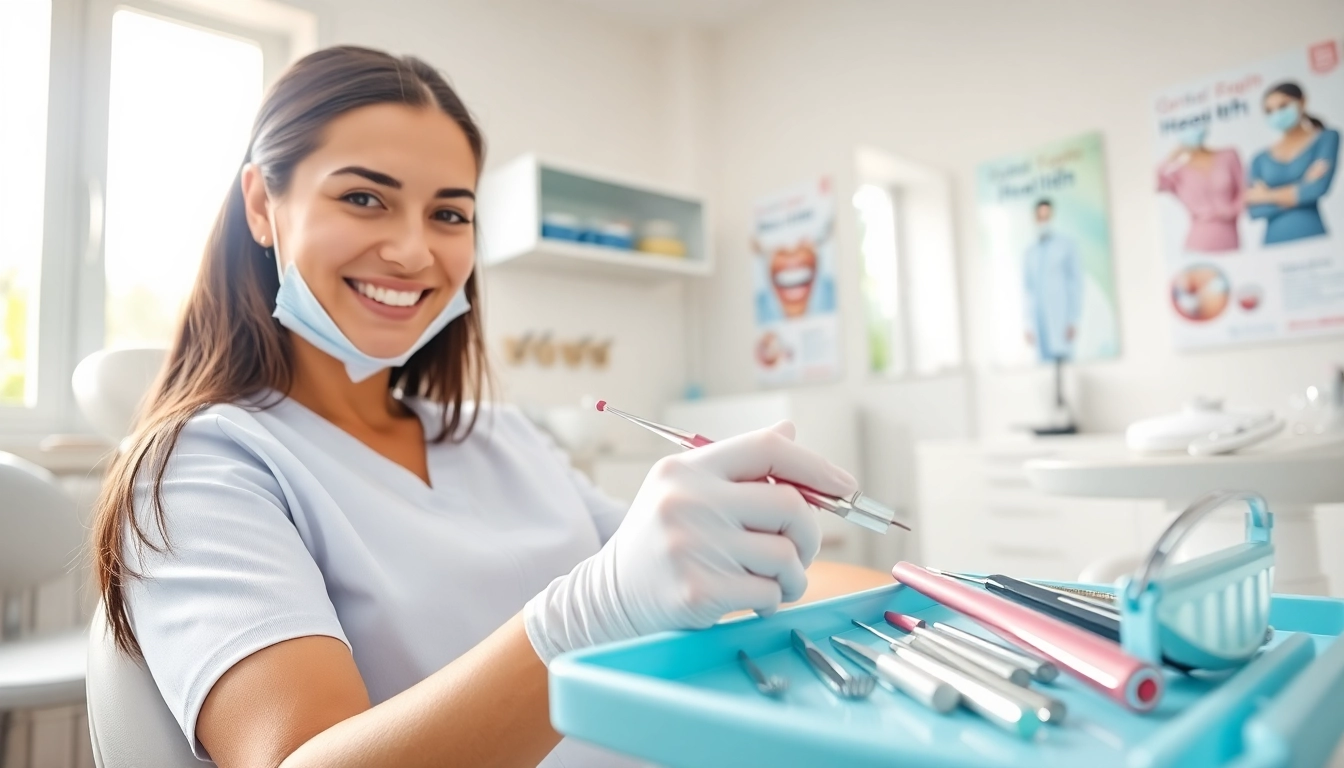Understanding Skin Lightening
Skin lightening has become a prevalent topic in the beauty and skincare industry, attracting individuals from various cultural backgrounds and skin types. The pursuit of lighter skin tones can be traced back to historical and societal influences that equate lighter skin with beauty, success, and privilege. As such, many seek Skin lightening solutions for different reasons ranging from cosmetic preferences to addressing medical skin conditions. This comprehensive guide delves into various aspects of skin lightening, providing insights into its methods, ingredients, associated risks, and the process of selecting the most suitable treatments.
What is Skin Lightening?
Skin lightening refers to the use of products or treatments designed to lighten the skin’s pigmentation or tone. This can be accomplished through the reduction of melanin, the pigment responsible for skin color, which may be elevated due to various factors, including sun exposure, hormonal changes, and skin disorders. Skin lightening approaches can vary significantly in their methods, effects, and the science behind them.
Common Reasons for Skin Lightening Interest
There are several reasons individuals consider skin lightening:
- Aesthetic Preference: Many individuals may feel that a lighter skin tone enhances their overall appearance and aligns with societal beauty standards.
- Even Skin Tone: Some seek skin lightening to address hyperpigmentation issues such as dark spots, melasma, or uneven skin tone, which can occur due to sun damage or hormonal fluctuations.
- Cultural Influences: In some cultures, lighter skin is perceived as a sign of beauty and higher social status, leading to strong preferences for lighter skin tones.
- Post-Acne Marks: Individuals with a history of acne may be motivated to lighten residual dark spots left post-treatment.
Myths and Misconceptions Surrounding Skin Lightening
Despite its popularity, skin lightening is often surrounded by misinformation. Some common myths include:
- All Products are Safe: Not all skin lightening products are created equal; many contain harmful chemicals which can lead to serious side effects.
- Instant Results: Many believe that skin lightening will provide immediate results, whereas most treatments need time and diligence to show effects.
- Only Light Skin is Beautiful: This misconception perpetuates harmful beauty standards; all skin tones have their beauty and should be celebrated.
Methods of Skin Lightening
Topical Treatments for Skin Lightening
Topical treatments are among the most common skin lightening options available. These can include creams, lotions, and serums that are applied directly to the skin. Popular ingredients found in these topical treatments include:
- Hydroquinone: An effective but controversial ingredient, hydroquinone reduces melanin production but can have side effects with prolonged use.
- Kojic Acid: Derived from mushrooms, this ingredient works to inhibit melanin production and is often used in various skin lightening creams.
- Vitamin C: Known for its antioxidant properties, Vitamin C helps to brighten skin and reduce dark spots over time.
Procedures and Professional Options for Skin Lightening
In addition to over-the-counter treatments, professional procedures are available and can yield faster and often more noticeable results. Some of these procedures include:
- Chemical Peels: These treatments involve the application of chemical solutions that exfoliate the top layers of skin, helping to remove dark pigmented areas.
- Laser Therapy: Lasers can target melanin and help break it down without damaging surrounding skin for effective skin lightening.
- Microdermabrasion: This procedure gently exfoliates the skin, accelerating cell turnover and lightening skin pigmentation.
Home Remedies for Skin Lightening
For those who prefer natural methods, home remedies can be cost-effective and accessible. While results may take longer, some commonly suggested remedies include:
- Lemon Juice: Known for its astringent properties, lemon juice can help lighten skin but should be used cautiously due to photosensitivity.
- Aloe Vera: This plant is soothing and may help lighten skin naturally due to its ability to improve skin health.
- Turmeric Paste: Often used in South Asian cultures, turmeric can brighten skin and reduce pigmentation.
Active Ingredients in Skin Lightening Products
Popular Ingredients for Skin Lightening
Understanding the active ingredients in skin lightening products is crucial for both safety and efficacy. Some widely researched ingredients include:
- Niacinamide: Also known as Vitamin B3, niacinamide helps to reduce pigmentation and improve overall skin texture.
- Azelaic Acid: This multi-functional ingredient tackles acne as well as pigmentation issues, making it popular among individuals with oily or acne-prone skin.
- Lactic Acid: A gentle exfoliant, lactic acid not only lightens but also hydrates the skin.
Understanding the Science Behind Skin Lightening
The science behind skin lightening revolves around the regulation of melanin production. Melanocytes are the cells responsible for producing melanin. By inhibiting these cells’ activity or promoting the shedding of pigmented cells, skin lightening treatments can modify skin tone. Understanding this biological process can help consumers make informed choices about the products they use.
Safety and Efficacy of Ingredients in Skin Lightening
As many individuals look for skin lightening products, it’s vital to consider not just effectiveness but also the safety of ingredients used. Products containing hydroquinone, for example, have raised concerns over potential adverse effects and are regulated in some regions. Always opting for products that have undergone clinical testing or are prescribed by professionals can help mitigate risks.
Potential Risks and Side Effects
Common Side Effects of Skin Lightening
While many seek skin lightening for aesthetic reasons, it’s essential to recognize potential side effects. Common reactions can include:
- Skin Irritation: Products may cause redness, sensitivity, or peeling, especially those with harsher ingredients.
- Allergic Reactions: Some individuals may experience allergies to certain compounds, resulting in rashes or discomfort.
- Photosensitivity: Many skin lightening agents increase the skin’s sensitivity to the sun, making it imperative to use sunscreen regularly.
Long-Term Risks Associated with Skin Lightening
Long-term use of certain skin lightening agents can lead to more severe health issues, such as:
- Ochronosis: A rare condition that can result in bluish-gray discoloration of the skin due to the prolonged use of hydroquinone.
- Thinning of the Skin: Some topical treatments may weaken the skin barrier over time, increasing susceptibility to injuries and infections.
- Melasma Rebound: Discontinuation of certain treatments might lead to a rebound effect, exacerbating pigmentation issues.
How to Minimize Risks During Skin Lightening
To ensure safety while pursuing skin lightening, consider the following:
- Consultation with a Professional: Seek advice from dermatologists to determine the most suitable and safest options for your skin type.
- Patch Testing: Always perform patch tests for new products to assess any adverse reactions before full application.
- Follow Application Guidelines: Adhere strictly to recommended usage instructions to avoid overuse and associated risks.
Choosing the Right Skin Lightening Treatment
Skin Type Considerations for Skin Lightening
Choosing the right skin lightening treatment should begin with an understanding of one’s skin type. Different skin types, whether oily, dry, or sensitive, will respond differently to various treatments:
- Oily Skin: Products with salicylic acid or azelaic acid may be beneficial.
- Dry Skin: Creams containing hydrating ingredients like hyaluronic acid might be preferable to avoid further dryness.
- Sensitive Skin: Gentle agents like licorice extract or niacinamide may provide effective lightening with minimal irritation.
Consultation with Professionals for Skin Lightening
Consulting with a dermatologist is vital before embarking on skin lightening treatments. This expert can provide personalized recommendations based on your unique skin concerns and types.
Evaluating Results and Setting Realistic Expectations for Skin Lightening
When pursuing skin lightening, setting realistic expectations is crucial. Changes will often take time, and results can vary depending on the individual and the methods used. Documenting progress and being consistent with selected treatments can help individuals evaluate the effectiveness reasonably over time.



